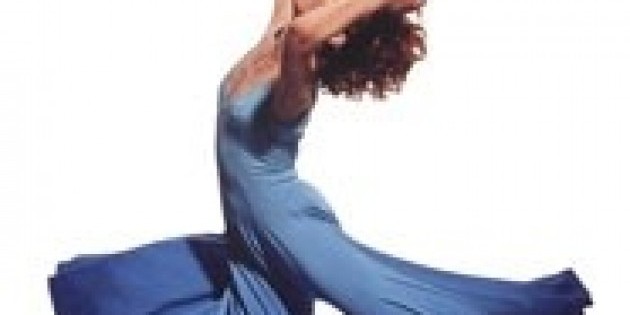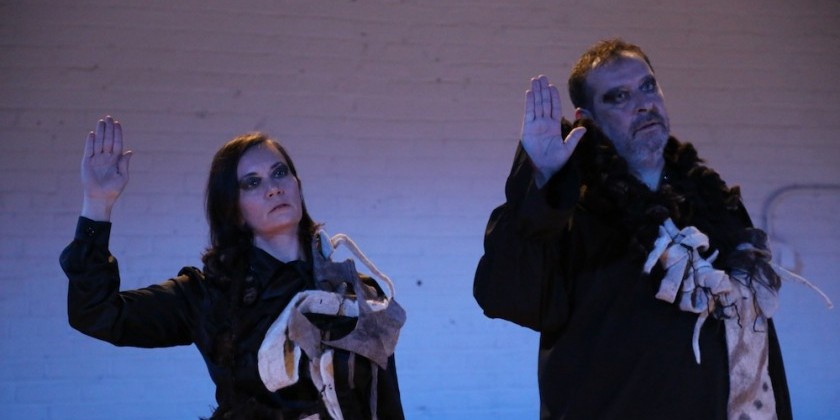Conversation About Tere O'Connor Dance's "Rammed Earth"

"Coffee Talk"
As a dance enthusiast, I like to bring friends with me to see work and to record impressions of the experience.
What is it about a specific performance that stirs us? What do we remember? What do we see? What do we feel? What questions do we have afterwards?
On Friday October 5th, 2007 I brought three friends, all graduates of NYU Tisch School of the Arts, to Tere O 'Connors RAMMED EARTH at The Chocolate Factory. I read a preview article in The New York Times about the work in which Tere O' Connor said,
"I think, unfortunately, most dance on big stages looks exactly the same, I often say it looks like a bunch of No. 2 pencils in an earthquake. Mostly what you see is the human form against the enormity of the space. That is the major message in most of those works; it's the major excitement in most of those works."
"Viewers", he said, "see this standardized message and not the choreographer's individual ideas."
read more at nytimes.com
(After I read this I kept imagining people dressed up as No. 2 pencils falling all over each other on stage. Just couldn't get that image out of my mind.)I also really wanted to go to the show and see how Tere O'Connor and his dancers used their forms in space.
I immediately got tickets...good thing...the show was SOLD OUT.
Here are some excerpts of our after-show conversation inspired by being part of RAMMED EARTH
| Christine Jowers dancer/dance-enthusiast | |
 |
Laura Peterson ,choreographer/dancer |
| Emily Moore, recent NYU graduate, dancer, teacher of kids 3-5 yrs old, | |
| Katherine Clancy, another recent NYU graduate, dancer, writer, bicyclist |
IN A COFFE SHOP IN QUEENS... Excerpts of Conversation, or What was Heard Over the Noise of the Espresso Grinder
About Engagment:
| Emily Moore: I really liked what you said earlier how you could hear their breath. I liked hearing all the rhythms in the dancing. One thing that I really learn from working with kids is if you have a rhythm, a melody, or a song they are so much more engaged then if you just talk to them. When I am watching his ( Tere O’ Connors) stuff I don’t zone out as much as I do with a lot of other things. |
|
|
|
|
 |
Laura Peterson: What do you zone out during? Dance? What kind of dance? |
|
|
|
| Emily Moore: I don’t know that there is a pattern really but I know that when I watch his stuff I don’t zone out. I think because he keeps changing rhythm and dynamics. | |
|
|
|
 |
Laura Peterson: I love zoning out during dance. I find it very relaxing. I actually try not to fight it and just come and go with it…it is part of being there part of enjoying being there and the experience.Things an go by and you don’t have to analyze every single second and that’s Ok I used to try not to admit it. |
|
|
|
| Katherine Clancy: Part of, I think, the whole changing of the chairs (was) I noticed when I was engaged and when I was not engaged. When we changed those chairs for the 2nd time, the sound of the chairs going into it (the new location) was like the score of the music previously. The audience does zone out ( in general, she is not speaking of tonights show) and not and not in the way you (Laura) are talking about necessarily. They really ZONE OUT. They just let it all go and are not present. Is there away of trying to keep us present? I don’t know. It is really important that we stay present in dance because it is collaborative. |
|
|
|
|
 |
Laura Peterson: Yeah between the audience and the performer. I think about this all the time. I am really afraid it is because dance is boring. It is incredibly boring. It is our responsibility to be aware of that. |
|
|
|
| Christine Jowers: What do you mean ? Is your work boring? | |
|
|
|
 |
Laura Petersen: No it is not, but I have taken a lot of pains to not be boring. |
|
|
|
| Christine Jowers: Then what is boring about dance? Moving is not boring. When we are dancing we are not bored. Where does this boringness start? |
|
|
|
|
| Katherine Clancy: Is it the proscenium? | |
|
|
|
 |
Laura Petersen: I am all about the proscenium. I don’t think it is the proscenium, I think it’s the choreography. As a choreographer you get so like involved with detail and how beautiful it is when two people go like that (she performs a gesture) interesting. How many ways can we do that thing? Then it just becomes small parts and you are so into how you crafted the small parts that you can’t see the forest through the trees. You can’t step back and think, ok, these people spent This money and they came here from their house when they could be watching TV -- which is all so fast with such fast changes and colors, and we’re asking them to slow down. What is that like for them? And then dance is very abstract. And you’re putting abstract music to it on top of it and that goes (bwooahhh, Laura makes discordant sounds) and your asking even more of them… People need to latch onto something. That is what Emily was saying. Give them a melody a song. People like a beat. People like a narrative … there is a reason why things are like that. People dig it. People need to connect |
|
|
|
| Christine : Maybe creating in our little rehearsal space we get too self involved and we forget about the people who are watching the show. | |
|
|
|
 |
Laura P: We are entertaining them. We are putting on costumes and we have lights and everything. It’s a show. Modern dance forgets it’s a show. It gets to be so philosophical…. which is all part of it |
|
|
|
| Christine J: Well look at Tere’s show it was philosophical AND entertaining. | |
|
|
|
 |
Laura P and Katherine C: Yeah it was very entertaining, thoroughly. |
|
|
|
 |
Laura P: I think it is the changing of space idea. Had we watched that entire thing frontally we would have zoned out. He knew when it was time (to move the audience) |
|
|
|
| Katherine: Exactly it was about timing. | |
|
|
|
 |
Laura P: How much can we see in one space. |
|
|
|
| Christine J: I wonder how long it takes to learn that movement | |
|
|
|
 |
Laura P: I was wondering that too |
|
|
|
| Christine J: how does he get it out? | |
|
|
|
| Katherine C: And what tasks were involved with making? If he was composing it on his own body or theirs and what he used verbally to bring it out, if anything? | |
|
|
|
| Emily M: They always had really strong intention. The movement is specific but the intention was really strong. | |
|
|
|
| Christine J (remember) when we were facing the white wall and Hilary and Heather were leaning backwards, walking backwards and staring at us…I caught Hilary’s eye | |
|
|
|
 |
Laura P: I think their task was to look in every single persons eyes. |
|
|
|
 |
Laura P: They look so unaffected. They are not stylized. They are just who they are. Don’t look dancerly, very stripped down. It was great. |
|
|
|
| Christine J: I don’t know, I have seen lots of bare bones movement before and thought that it was boring. I think they made intentional qualitative choices…Christopher twists his body and looks like melted butter or something and then he just jumps right out of it. | |
|
|
|
| Emily M: A lot of stuff ( Tere) he does, the movement, the repetition, has the potential to transform into something more at any given time. They are doing all these little movements and all of the sudden all he (Matthew Rogers) has to do is say “ You got the job.” And then there is the story… | |
|
|
|
 |
Laura P: a little narrative. |
|
|
|
| Katherine C: I think that is why the work is so watch able because the potential is there... | |
|
|
|
| Christine J: it keeps us with it… | |
Final Impressions:
![]()
Katie Clancy
What is something you will always remember about Tere O' Connors evening?
One thing I will never forget about Tere's piece was how he managed to create film effects using just bodies, tempo/texture variation, and lighting/music manipulation

Laura Peterson
What is something you will always remember about Tere O' Connors evening?
I remember the rhythmic running of Matthew; he counted every step he took. He announced how many jogging steps he would take as he performed them, "Seven of these..." "Thirty seven of these..." and everyone one was correct! It was so simple and precise in its design and performance. He traveled throughout the space as he performed these creating diagonal floor patterns. It was so satisfying to watch and participate in. It was like this non-confrontational audience participation.
![]()
Emily Moore
What is something you will always remember about Tere O' Connors evening?
Meeting with dancers afterwards to talk about the show!













